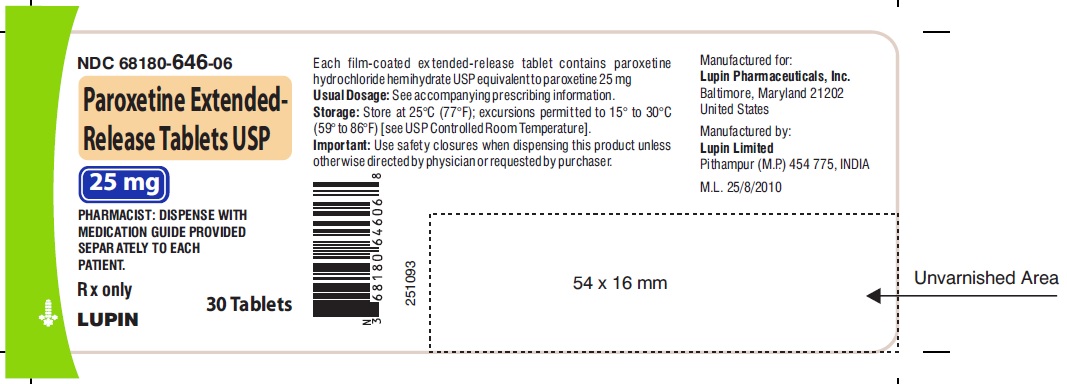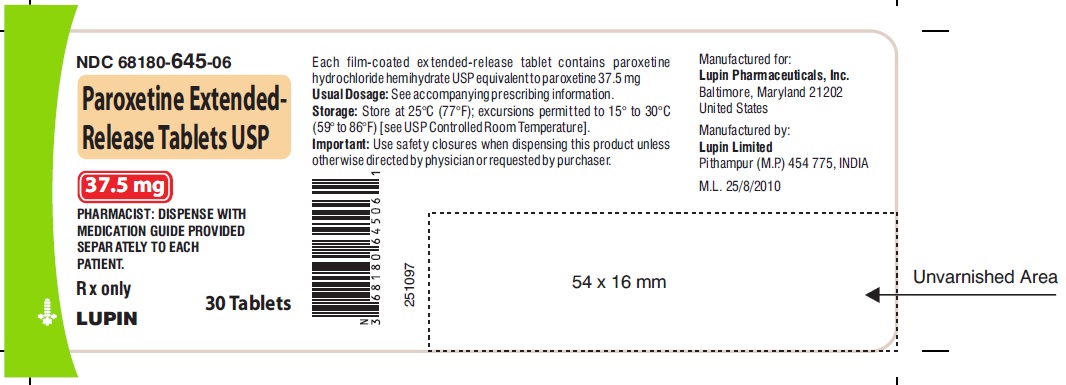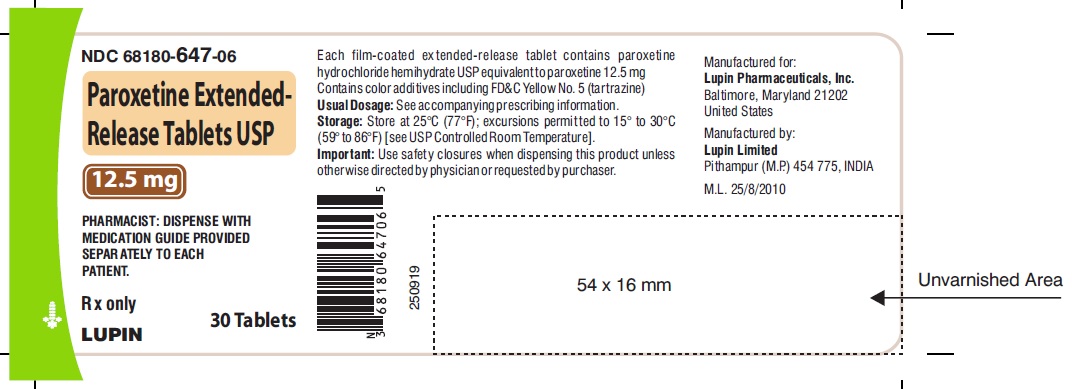There are high number of clear evidence that breastfeeding provides best nutrition that you can give to your baby. It is also evident that lactation is good for mothers health as well. Evolution has designed breastfeeding in a way that it caters all nutritional need of your child. However modern medicine is quite new for evolution, that is why mothers body is not well prepared to filter unnecessary chemical found in medicines. It becomes a necessity to figure out which drug is safe and which drug is dangerous for your newborn while nursing. In this article we will understand function of Paroxetine Tablet, Film Coated, Extended Release and its suitability with breastfeeding.
What is Paroxetine Tablet, Film Coated, Extended Release used for?
Major Depressive Disorder: Paroxetine extended-release tablets are indicated for the treatment of major depressive disorder. The efficacy of paroxetine extended-release tablets in the treatment of a major depressive episode was established in two 12-week controlled trials of outpatients whose diagnoses corresponded to the DSM-IV category of major depressive disorder (see CLINICAL PHARMACOLOGY: Clinical Trials). A major depressive episode (DSM-IV) implies a prominent and relatively persistent (nearly every day for at least 2 weeks) depressed mood or loss of interest or pleasure in nearly all activities, representing a change from previous functioning, and includes the presence of at least 5 of the following 9 symptoms during the same 2-week period: Depressed mood, markedly diminished interest or pleasure in usual activities, significant change in weight and/or appetite, insomnia or hypersomnia, psychomotor agitation or retardation, increased fatigue, feelings of guilt or worthlessness, slowed thinking or impaired concentration, a suicide attempt, or suicidal ideation. The antidepressant action of paroxetine in hospitalized depressed patients has not been adequately studied. Paroxetine extended-release tablets have not been systematically evaluated beyond 12 weeks in controlled clinical trials; however, the effectiveness of immediate-release paroxetine hydrochloride in maintaining a response in major depressive disorder for up to 1 year has been demonstrated in a placebo-controlled trial (see CLINICAL PHARMACOLOGY: Clinical Trials). The physician who elects to use paroxetine extended-release tablets for extended periods should periodically re-evaluate the long-term usefulness of the drug for the individual patient (see DOSAGE AND ADMINISTRATION). Panic Disorder: Paroxetine extended-release tablets are indicated for the treatment of panic disorder, with or without agoraphobia, as defined in DSM-IV. Panic disorder is characterized by the occurrence of unexpected panic attacks and associated concern about having additional attacks, worry about the implications or consequences of the attacks, and/or a significant change in behavior related to the attacks. The efficacy of paroxetine extended-release tablets was established in two 10-week trials in panic disorder patients whose diagnoses corresponded to the DSM-IV category of panic disorder (see CLINICAL PHARMACOLOGY: Clinical Trials). Panic disorder (DSM-IV) is characterized by recurrent unexpected panic attacks, i.e., a discrete period of intense fear or discomfort in which 4 (or more) of the following symptoms develop abruptly and reach a peak within 10 minutes: (1) palpitations, pounding heart, or accelerated heart rate; (2) sweating; (3) trembling or shaking; (4) sensations of shortness of breath or smothering; (5) feeling of choking; (6) chest pain or discomfort; (7) nausea or abdominal distress; (8) feeling dizzy, unsteady, lightheaded, or faint; (9) derealization (feelings of unreality) or depersonalization (being detached from oneself); (10) fear of losing control; (11) fear of dying; (12) paresthesias (numbness or tingling sensations); (13) chills or hot flushes. Long-term maintenance of efficacy with the immediate-release formulation of paroxetine was demonstrated in a 3-month relapse prevention trial. In this trial, patients with panic disorder assigned to immediate-release paroxetine demonstrated a lower relapse rate compared to patients on placebo (see CLINICAL PHARMACOLOGY: Clinical Trials). Nevertheless, the physician who prescribes paroxetine extended-release tablets for extended periods should periodically re-evaluate the long-term usefulness of the drug for the individual patient (see DOSAGE AND ADMINISTRATION). Social Anxiety Disorder: Paroxetine extended-release tablets are indicated for the treatment of social anxiety disorder, also known as social phobia, as defined in DSM-IV (300.23). Social anxiety disorder is characterized by a marked and persistent fear of 1 or more social or performance situations in which the person is exposed to unfamiliar people or to possible scrutiny by others. Exposure to the feared situation almost invariably provokes anxiety, which may approach the intensity of a panic attack. The feared situations are avoided or endured with intense anxiety or distress. The avoidance, anxious anticipation, or distress in the feared situation(s) interferes significantly with the person's normal routine, occupational or academic functioning, or social activities or relationships, or there is marked distress about having the phobias. Lesser degrees of performance anxiety or shyness generally do not require psychopharmacological treatment. The efficacy of paroxetine extended-release tablets as a treatment for social anxiety disorder has been established, in part, on the basis of extrapolation from the established effectiveness of the immediate-release formulation of paroxetine. In addition, the efficacy of paroxetine extended-release tablets was established in a 12-week trial, in adult outpatients with social anxiety disorder (DSM-IV). Paroxetine extended-release tablets have not been studied in children or adolescents with social phobia (see CLINICAL PHARMACOLOGY: Clinical Trials). The effectiveness of paroxetine extended-release tablets in long-term treatment of social anxiety disorder, i.e., for more than 12 weeks, has not been systematically evaluated in adequate and well-controlled trials. Therefore, the physician who elects to prescribe paroxetine extended-release tablets for extended periods should periodically re-evaluate the long-term usefulness of the drug for the individual patient (see DOSAGE AND ADMINISTRATION). Premenstrual Dysphoric Disorder: Paroxetine extended-release tablets are indicated for the treatment of PMDD. The efficacy of paroxetine extended-release tablets in the treatment of PMDD has been established in 3 placebo-controlled trials (see CLINICAL PHARMACOLOGY: Clinical Trials). The essential features of PMDD, according to DSM-IV, include markedly depressed mood, anxiety or tension, affective lability, and persistent anger or irritability. Other features include decreased interest in usual activities, difficulty concentrating, lack of energy, change in appetite or sleep, and feeling out of control. Physical symptoms associated with PMDD include breast tenderness, headache, joint and muscle pain, bloating, and weight gain. These symptoms occur regularly during the luteal phase and remit within a few days following the onset of menses; the disturbance markedly interferes with work or school or with usual social activities and relationships with others. In making the diagnosis, care should be taken to rule out other cyclical mood disorders that may be exacerbated by treatment with an antidepressant. The effectiveness of paroxetine extended-release tablets in long-term use, that is, for more than 3 menstrual cycles, has not been systematically evaluated in controlled trials. Therefore, the physician who elects to use paroxetine extended-release tablets for extended periods should periodically re-evaluate the long-term usefulness of the drug for the individual patient (see DOSAGE AND ADMINISTRATION).
Is using Paroxetine Tablet, Film Coated, Extended Release unsafe in breastfeeding? Can there be bad consequences for baby if I use it while breastfeeding?
As per our analysis Paroxetine Tablet, Film Coated, Extended Release contains only one ingredient and that is Paroxetine. We have analyzed Paroxetine and it seems to be safe to use Paroxetine while breastfeeding, that means usage of Paroxetine Tablet, Film Coated, Extended Release shall be safe while breastfeeding. Below you can check more details of Paroxetine usage in breastfeeding. We recommend you to go through provided detailed analysis as below take decision accordingly.
Paroxetine Tablet, Film Coated, Extended Release Breastfeeding Analsys
SafeCAS Number: 61869-08-7
Excreted in tiny amounts into breast milk. Serum levels of breastfed infants whose mothers are on Paroxetine are usually undetectable or very low. No harm effect has been observed on health and short or long term development of infants. Transient troubles in the early neonatal period like drug withdrawal syndrome among newborn or premature infants with high serum levels as a result of treatment with Paroxetine to the mother during pregnancy have been observed. Paroxetine causes fewer problems related to galactorrhea than other antidepressant drugs Mothers who are treated with antidepressant medicaction are in need of stronger support for a higher risk of early breastfeeding failure.
Paroxetine Tablet, Film Coated, Extended Release Breastfeeding Analsys - 2
CAS Number: 61869-08-7

Because of the low levels of paroxetine in breastmilk, amounts ingested by the infant are small and paroxetine has not been detected in the serum of most infants tested. Occasional mild side effects have been reported, especially in the infants of mothers who took paroxetine during the third trimester of pregnancy, but the contribution of the drug in breastmilk is not clear. Most authoritative reviewers consider paroxetine one of the preferred antidepressants during breastfeeding.[1][2][3][4][5] Occasional mild side effects such as insomnia, restlessness and increased crying have ben reported in breastfed infants. Mothers taking an SSRI during pregnancy and postpartum may have more difficulty breastfeeding, although this might be a reflection of their disease state.[6] These mothers may need additional breastfeeding support. Breastfed infants exposed to an SSRI during the third trimester of pregnancy have a lower risk of poor neonatal adaptation than formula-fed infants.

What should I do if I am breastfeeding mother and I am already exposed to Paroxetine Tablet, Film Coated, Extended Release?
As usage of Paroxetine Tablet, Film Coated, Extended Release is mostly safe while breastfeeding hence there should not be any concern. In case of any change in behavior or health of your baby you should inform your health care provider about usage of Paroxetine Tablet, Film Coated, Extended Release else no further action is required.
My health care provider has asked me to use Paroxetine Tablet, Film Coated, Extended Release, what to do?
Usage of Paroxetine Tablet, Film Coated, Extended Release is safe for nursing mothers and baby, No worries.
If I am using Paroxetine Tablet, Film Coated, Extended Release, will my baby need extra monitoring?
No
Who can I talk to if I have questions about usage of Paroxetine Tablet, Film Coated, Extended Release in breastfeeding?
US
National Womens Health and Breastfeeding Helpline: 800-994-9662 (TDD 888-220-5446) 9 a.m. and 6 p.m. ET, Monday through Friday
UK
National Breastfeeding Helpline: 0300-100-0212 9.30am to 9.30pm, daily
Association of Breastfeeding Mothers: 0300-330-5453
La Leche League: 0345-120-2918
The Breastfeeding Network supporter line in Bengali and Sylheti: 0300-456-2421
National Childbirth Trust (NCT): 0300-330-0700
Australia
National Breastfeeding Helpline: 1800-686-268 24 hours a day, 7 days a week
Canada
Telehealth Ontario for breastfeeding: 1-866-797-0000 24 hours a day, 7 days a week
Drug Brands with same Active ingredients




